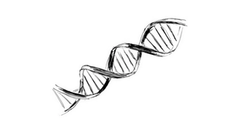
EP. 4A: First -generation TRK Inhibitors and Treatment Resistance in NTRK Fusion-positive Cancers
In the third video interview of the series, David S. Hong, MD, from the University of Texas MD Anderson Cancer Center discusses the safety and efficacy of first-generation TRK inhibitors and reflects on challenges affecting next-generation TRK inhibitors including research into mechanisms of treatment resistance.
Episodes in this series

The ideal preferred method of NGS testing is NGS or next-generation sequencing, and preferably RNA-based [NGS]. I would argue that there is increasing evidence that NGS testing or molecular testing in general should occur as soon as the patient is diagnosed with metastatic cancer or stage IV cancer.
The latest dataset that we have was from ESMO this past year. We presented this data at ESMO looking at TRK fusion and larotrectinib data We had a total of 218 patients, and this was across [a] different number of prior lines of therapy. And again, this [study included] all different tumor types and across different ECOGs [performance statuses], and the overall response rate remained around 75%. Our initial data cutoff showed around 80% response rates. The median duration of response was close to 49 months, median progression free survival was 35 months, and median overall survival had not been yet reached. I would argue that there is no therapy out there, if you have metastatic cancer, that matches that. If you are able [and] are identified to have [an] NTRK fusion, I would argue that you need to try to get onto larotrectinib or entrectinib at some point.
These patients do well on this study. Overall from their previous state to actually going on larotrectinib—they have significant improvement in their overall quality of life. The overall adverse event profile of these drugs [is] very benign. Probably the most common side effect tends to be this slight dizziness that patients develop, and over time, they actually get better. There are some grade 3 events such as increase in LFTs (liver function tests), but usually these adverse events or side effects are manageable. You just hold the drug, you dose reduce them, and they still seem to respond to therapy.
There are really 4 different mechanisms of resistance. One is something called solvent-front mutations and gatekeeper mutations. Both of these mutations, differing on where they are, and the third called xDFG, really kind of affect that near-ATP pocket. And then the last kind is [the] development of alternative pathways, whether it's BRAF or MET. These are alternative signaling pathways that can emerge from mechanisms of resistance.
The solvent-front mutation is probably the most common. Obviously, we don't have a huge number of patients to make that determination at this point, but several years ago, we presented some of th[ese] data on selitrectinib, which was this molecule called LOXO-195. Probably the most common subset of patients who became resistant to larotrectinib and entrectinib, the first generation of NTRK inhibitors, was [those with] the solvent-front mutation. The second generations tends to work in that [group and] tend to have efficacy, albeit not as robust as we'd hoped for, compared to the first generation. Selitrectinib and also repotrectinib both target solvent-front and gatekeeper mutations. Selitrectinib also targets xDFG. Both of these drugs tend to have response rates around 40% to 50%, and that may again just be reflective of just the disease burden in patients. The data from selitrectinib would also suggest that there was a little bit more toxicity associated with the second generation: more dizziness [and] ataxia associated with that based upon the AACR presentation we gave several years ago.
There are hopes that there will be drugs for these patients who eventually become resistant to larotrectinib. The good news is that one of the challenges of these trials is these patients on larotrectinib and entrectinib are on for so long and they benefit for so long from the first-generation drugs.
The main challenge of doing these trials is identifying new patients. It's been years now, and we've identified 218 patients on the first trial of larotrectinib, and I think that number will start ticking up as NGS becomes more common. But again, with the second generation, because the patients who get the first generation are rare, but also they do so well, finding enough patients for the second generation has been always a little bit of a challenge.
I do think that, as most things with targeted therapy, these patients, even in the second generation, may eventually become resistant. So how do we think about the next generation, or how do we improve upon the first generation even more? These are questions that we need to think through as we identify more and more of these patients.









































